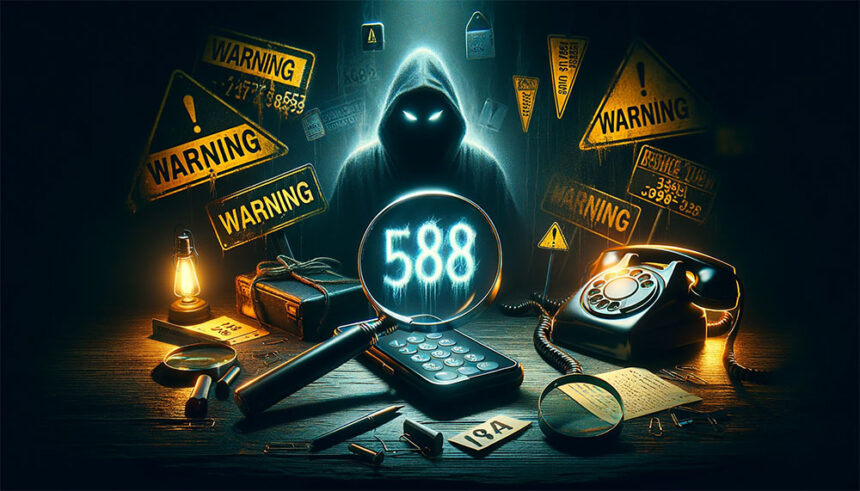The 588 area code has been shrouded in a bit of mystery lately. Some people report receiving a lot of spam calls and texts from this number, while others have had perfectly legitimate interactions. So, what’s the deal with the 588 area code? Is it safe? Let’s dive in and separate fact from fiction.
What is the 588 Area Code?
The 588 area code is a relatively new addition to the North American Numbering Plan (NANP). It was officially authorized by the Federal Communications Commission (FCC) in 2011 and first put into service in 2015. Unlike most area codes, which are assigned to specific geographic locations, the 588 area code is not tied to any particular region. This means that phone numbers with the 588 prefix can be assigned to businesses and individuals all over the United States and Canada.
Where is 588 Area Code:
If you’re wondering about the 588 area code location, you’ll find that it doesn’t correspond to a specific geographic region. Unlike traditional area codes tied to particular locations, the 588 area code is not limited to any particular area. This flexibility allows phone numbers with the 588 prefix to be assigned to businesses and individuals across the United States and Canada.
Why Do I Keep Getting Calls and Texts from the 588 Area Code?
There are a few reasons why you might be receiving calls and texts from the 588 area code:
- Legitimate Businesses: Many businesses, particularly service providers and customer support lines, use the 588 area code for toll-free or non-geographic numbers. This allows them to reach customers across the country without having to worry about local area codes.
- Spam and Scams: Unfortunately, scammers and spammers have also latched onto the 588 area code. Because it’s not tied to a specific location, it can be easier for them to spoof their caller ID and make their calls appear legitimate.
Is the 588 Area Code Safe?
The 588 area code itself is not inherently dangerous. However, it’s important to be cautious when answering calls or responding to texts from this number. Here are some tips for staying safe:
- Be wary of unsolicited calls and texts: If you don’t recognize the number, don’t answer the call or respond to the text.
- Never click on links or attachments in suspicious messages: These could be phishing attempts designed to steal your personal information.
- Don’t provide any personal information over the phone or in a text message unless you are absolutely sure who you are speaking with.
- Use a call-blocking app: Many call-blocking apps can help you filter out unwanted calls, including those from the 588 area code.
What Should I Do if I Keep Getting Spam Calls and Texts from the 588 Area Code?
If you’re being bombarded with spam calls and texts from the 588 area code, you can take a few steps to stop them:
- Report the calls and texts to the FCC: You can file a complaint online at the FCC’s website.
- Contact your phone carrier: Your phone carrier may be able to block calls and texts from the 588 area code for you.
- Use a call-blocking app: As mentioned above, a call-blocking app can be a great way to filter out unwanted calls.
By following these tips, you can stay safe and avoid becoming a victim of spam and scams from the 588 area code. Remember, it’s always better to be cautious than to take unnecessary risks.
Conclusion:
The 588 area code, once shrouded in a cloak of confusion, has finally revealed its secrets. We’ve learned that it’s not inherently dangerous, but it can be a double-edged sword. Legitimate businesses and services use it to connect with customers, but unfortunately, scammers have also latched onto it for their nefarious purposes.







